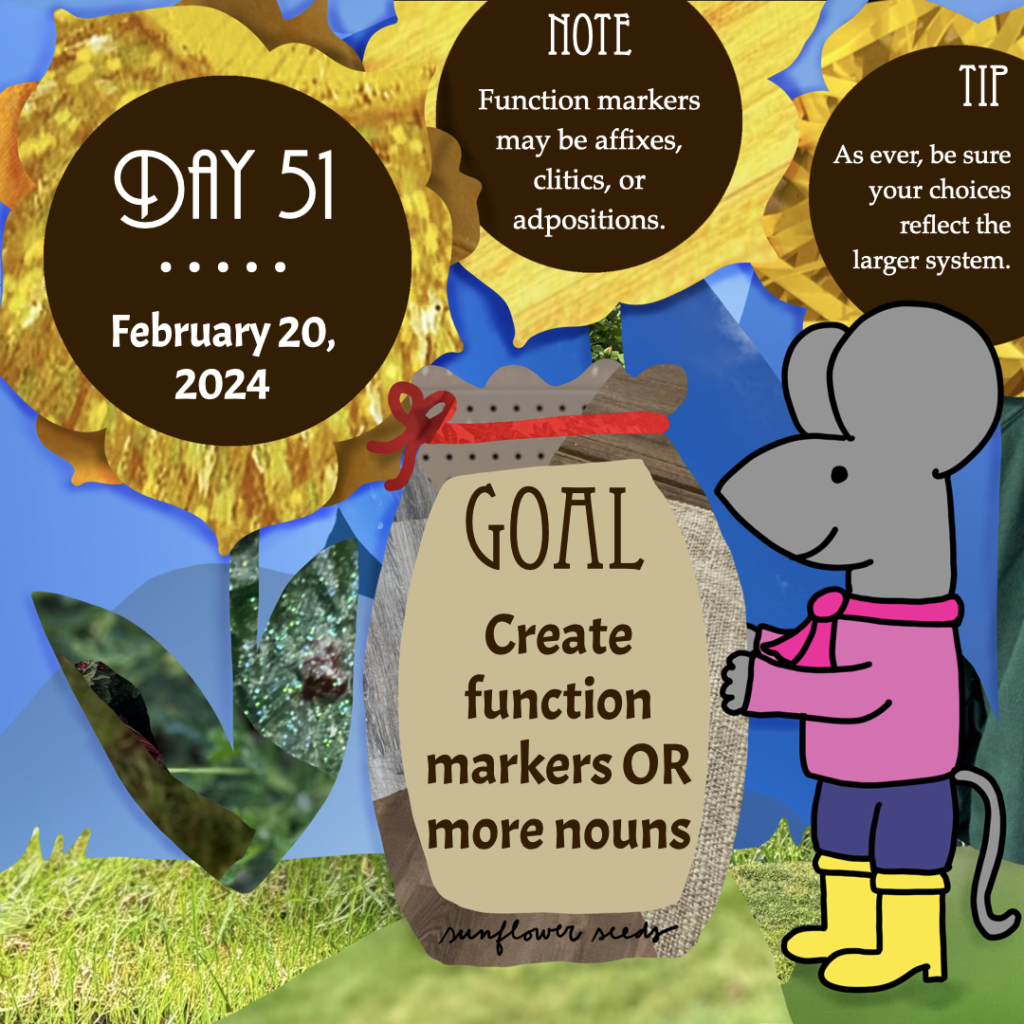
Goal: Create function markers or more nouns
Note: Function markers may be affixes, clitics, or adpositions.
Tip: As ever, be sure your choices reflect the larger system.
Work focus: Create/Make/List
As with the past few days, you will either be focusing on simply creating more words to expand the vocabulary of your language or focusing on crafting the lexical sources that will become the inflection markers indicating a noun’s function. While you have already explored options for function markers, remember that these inflections may be affixed to the noun, may be forms that are clitics (i.e. they are not affixes but, like, contractions, may heavily lean on the noun base and act in ways similar to affixes in particular contexts), or adpositions (i.e. function words that occur before or after the noun but do not attach). Where these inflection markers occur relative to the noun is heavily influenced by their lexical sources (i.e. whether they are nominal modifiers, verbs, or other modifiers) and your language’s word order. Finally, what function markers you need depends on how many cases you chose to incorporate into your language’s system.
For every lexical source you need, make sure you have created a root for it in your language, and then work on reducing its form to mimic the process of grammaticalization. Then use those forms alongside several different noun shapes (focus on using nouns with different phonological forms and, if relevant, different inflections, such as singular or plural). If the forms should interact with sound changes, make sure you list all the different ways the inflectional form will occur in context (at least all the ways you can predict for now—there are always surprises as you continue to use the system!).
I am sure you have noticed time and again in these prompts that there is really no way to specifically isolate a single decision you’re tasked with making. And so, with each decision, you essentially need to be sensitive to several other areas all at once to ensure you’re creating a larger cohesive system rather than a list of distinct features. You will also notice that some days (or weeks, even) will be slower for your language creation process than others. That’s how it goes with language creation—some areas need little focus or explication as you consider them while other areas will take a great deal of focus, development, and exemplification as you work on them. For every area that seems “easier” to create in a language, there will be some other intricate feature of complexity.
